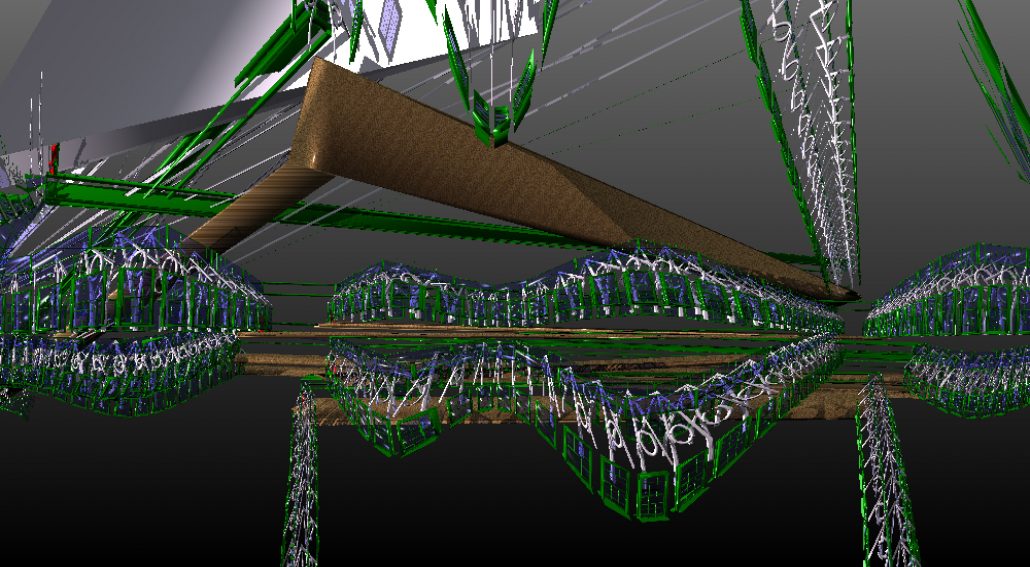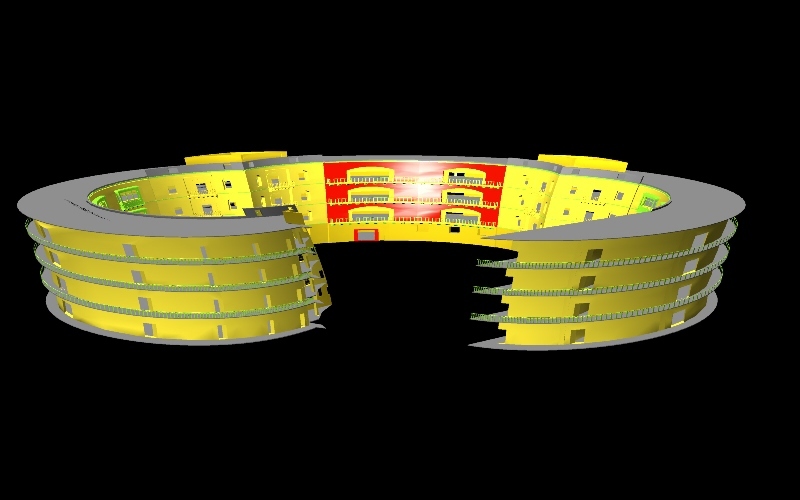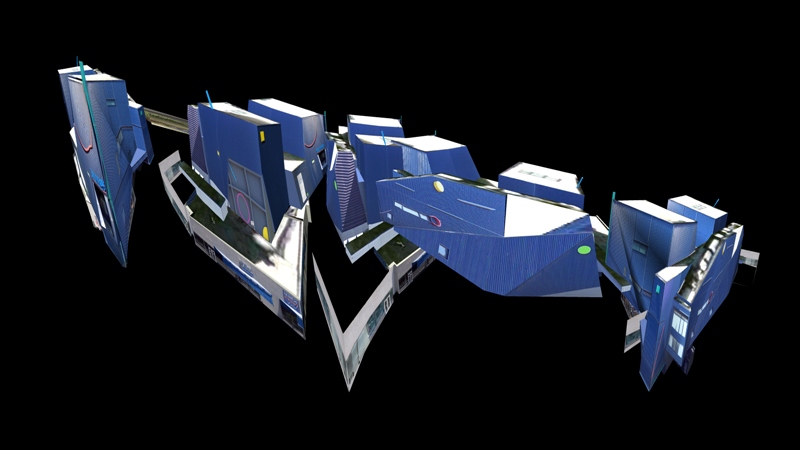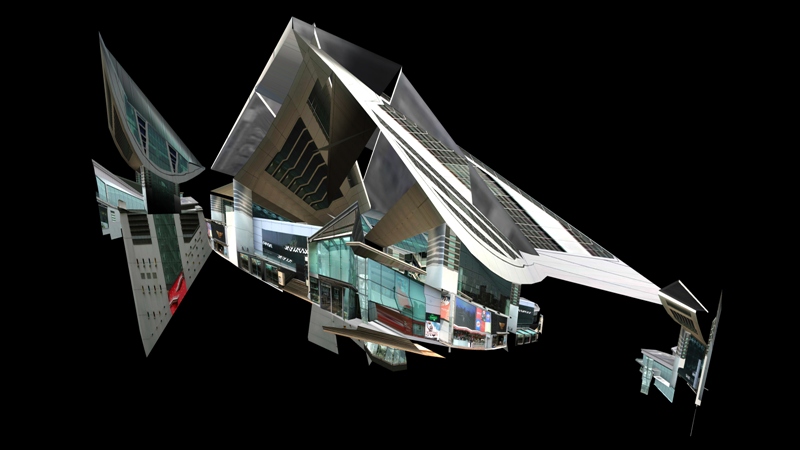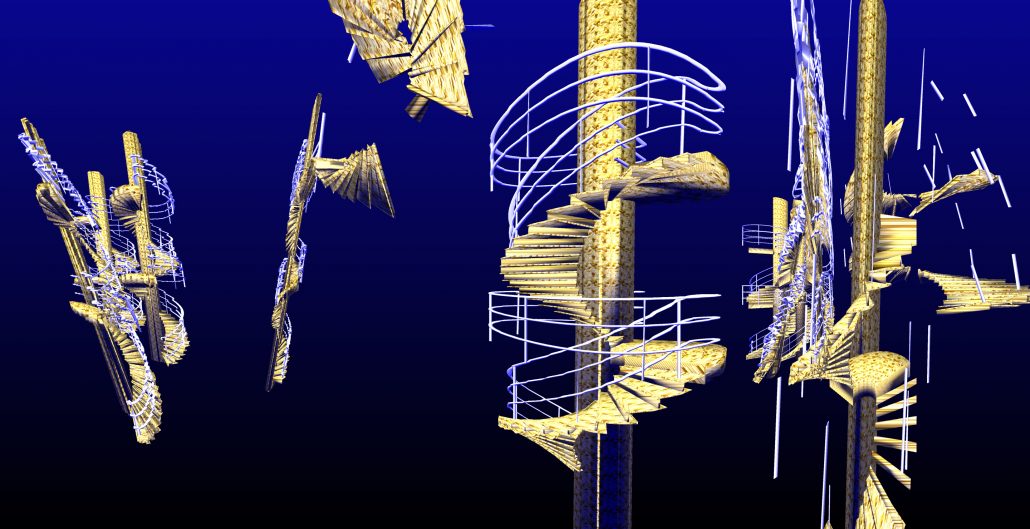The Moving Oculus
New Concepts in Perspective
This project was actually part of my degree work at Brighton. It began when I was taking the train back to London with my Course Supervisor, Dr Ivana Wingham. I tentatively threw out the idea that it might be possible to define analogues of perspective projection defined not by relationship to a single point, the eye point or in Renaissance texts, the oculus, but by a line or what mathematicians call a space curve.
And suddenly I had my main course project. The idea is documented in a paper by myself published in the superb, and fabulously illustrated, text, edited by Dr Wingham, called Mobility of the Line, published by Birkhauser, ISBN 978-3-0346-0824-4.
That paper is illustrated with images created by Nastaran Ghaidar, one of my fellow students at Brighton, whose incomparable aesthetic flair enabled her to use my software to create far more striking pictures than my rather more humdrum efforts!
The concept is interesting because it created automatically a kind of wrap-around view of the structure being represented equivalent to all elevations combined into one, and so is a formal mathematical model of a popular Cubist paradigm.
I illustrate this page with some of my own experiments. You may note that the effects vary from looking relatively ordinary, as in the red and yellow building appearing below, to images barely recohgnisable as architectural structures at all. But note this: the red and yellow building is actually turned nside out! The little cusps appearing on the inside of its apparently round shape are actually its outer rectangular corners.










